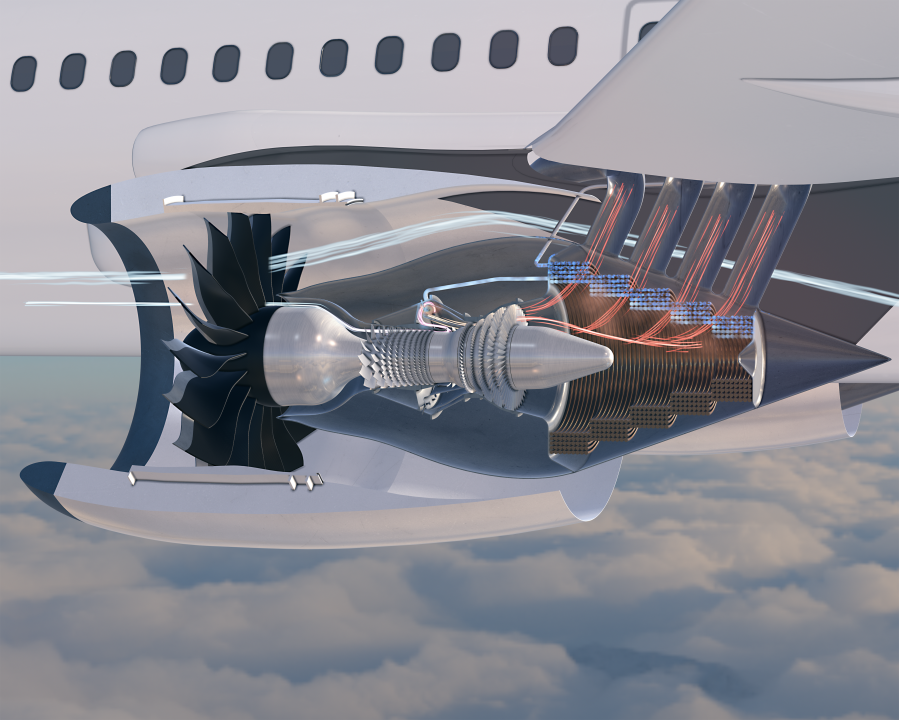
Water injection increases power in a jet engine by cooling the air entering the engine’s compressor. The cooler, denser air allows the engine to produce more thrust.
When water is injected into the intake of a jet engine, it evaporates, absorbing heat from the air. This reduces the air temperature and increases its density. The denser air entering the compressor allows it to compress more air per revolution, increasing the mass flow rate through the engine.
The increased mass flow rate, combined with the cooler, denser air, results in more air and fuel being burned in the combustion chamber. This produces higher pressures and temperatures, which are then converted into greater thrust by the turbine and nozzle.
The power output of the engine is directly related to the mass flow rate. By increasing the mass flow rate through water injection, the engine can produce significantly more thrust and power output, typically an increase of 5-15% depending on the engine and operating conditions.

Water injection is commonly used on military aircraft for take-off, climb, and combat maneuvers where extra power is needed. It provides a temporary boost in engine performance when required, though the water supply is limited and must be used judiciously.
Certainly! Here are some additional details on how water injection works in jet engines and its benefits:
Mechanism of Water Injection
- Cooling Effect:
- When water is injected into the engine, it undergoes evaporation. This phase change from liquid to vapor absorbs a significant amount of heat from the surrounding air.
- The cooling effect lowers the temperature of the air entering the compressor, which increases its density.
- Increased Air Density:
- By increasing air density, more oxygen is available for combustion. This means that the engine can burn more fuel, leading to higher energy output.
- Enhanced Combustion:
- The combination of cooler air and increased mass flow allows for a more efficient combustion process. The engine can operate at a higher thrust setting without overheating.
Benefits of Water Injection
- Thrust Boost:
- Water injection can provide a temporary thrust boost, often used during critical phases of flight like takeoff and climb.
- Performance in Hot Conditions:
- Engines may lose efficiency in high-temperature conditions. Water injection helps mitigate this loss by cooling the intake air.
- Increased Engine Efficiency:
- By allowing the engine to operate more effectively under various conditions, water injection can improve overall fuel efficiency during specific maneuvers.
- Combat and Tactical Advantages:
- In military applications, the ability to temporarily increase thrust can be crucial for maneuvers, making aircraft more agile in combat situations.
Limitations and Considerations
- Water Supply:
- The amount of water available is limited, so it must be used judiciously. Aircraft are typically equipped with tanks to store the water.
- Weight Penalty:
- The additional weight of the water and storage system can impact overall aircraft performance. Designers must carefully balance the benefits of water injection against this weight.
- System Complexity:
- Integrating a water injection system adds complexity to the engine design. Maintenance and reliability are important considerations.
Historical Context
- Water injection has been used in various military aircraft since World War II, and it has seen applications in high-performance jets like the F-86 Sabre and more modern fighter jets.
- Some commercial aircraft also utilize water injection systems for enhanced performance under specific conditions.
Overall, water injection is a valuable technique in aviation, allowing for improved engine performance and efficiency when needed most.





